DP3 Architects Ltd. tripled the size of the Easley (SC) Fire Department’s existing 50-year-old station by providing critical added capacity and state-of-the art amenities, with the added challenge of creating a design that would allow the existing station to remain operational throughout the renovation and addition construction.
Brad Owen, Easley’s chief, says the department has 35 paid full-time firefighters and 15 volunteer firefighters operating out of three stations. “We have three front-line engines, two reserve engines, 75-foot and 95-foot aerial platforms, three squad/brush/rescue/emergency medical services (EMS) vehicles, and two service vehicles,” Owen says. “Station 5 was originally built in 1970 as a two-bay station, with living quarters and administrative offices adjacent to them,” he notes. “As the department grew, the administrative offices were moved to another city building, but with this renovation and addition, we wanted to bring them back and make it a headquarters station.”
Michael T. Pry, senior associate at DP3 Architects Ltd., says DP3’s design goal was to take the old building and give it new life as a headquarters fire station by expanding the structure to three bays, renovating the original spaces, and putting a two-story addition onto the building. “There was only 6⁄10 of an acre to work with, which is not a lot of land, so the decision was made to go up instead of out,” Pry observes. “And, the biggest challenge for us was that the fire station had to stay in operation during the renovation and addition process.”
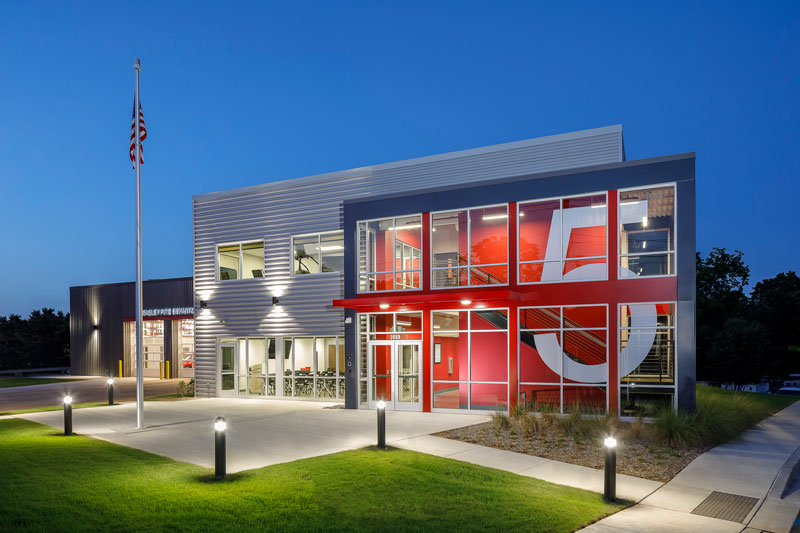
1 DP3 Architects Ltd. redesigned and added onto a 50-year old station to triple its space for the Easley (SC) Fire Department. (Photos courtesy of DP3 Architects Ltd.)
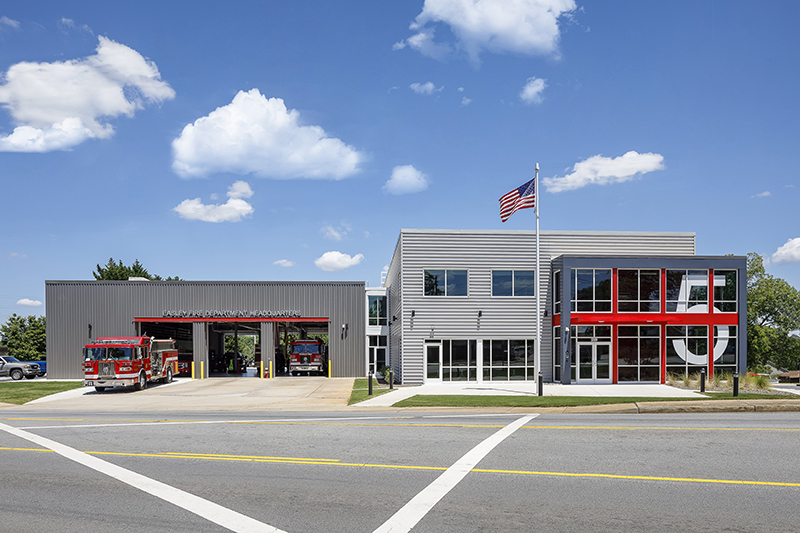
2 The bones of the original two-bay station (at left) were renovated and expanded to three drive-through, double-deep bays, and a new two story addition was attached to the bays.
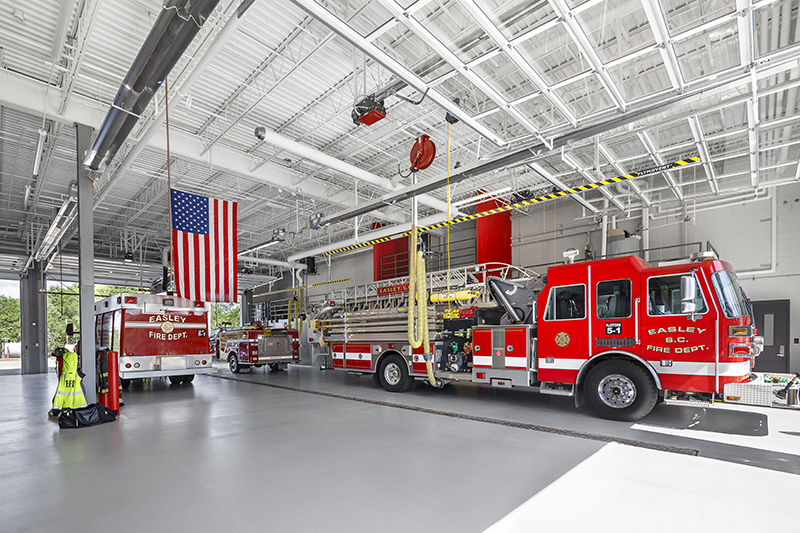
3 The apparatus bays in Easley Fire Department Station 5.
Owen says that firefighters worked out of the old facility while the addition was being built but had to move apparatus out to the department’s two other stations part of the time the old section was being renovated. “Most of the time, we were able to leave apparatus on site during the construction process,” he says. “But, it was like a moving chess game, considering all the next steps that we had to take during the renovation and the construction of the new addition. It was challenging, but it worked out well because DP3 kept us well informed.”
Pry says the new Station 5 has three double-deep, drive-through apparatus bays, with storage rooms, a workshop, turnout gear laundry and storage, and a decon room running along the left side of the bays. Those spaces have their own heating, ventilating and air conditioning (HVAC) and exhaust systems, he adds.

4 The station’s dining room table was built by firefighters from wood salvaged from a building that previously stood at the site and contains inset medallions with the names of retired firefighters.
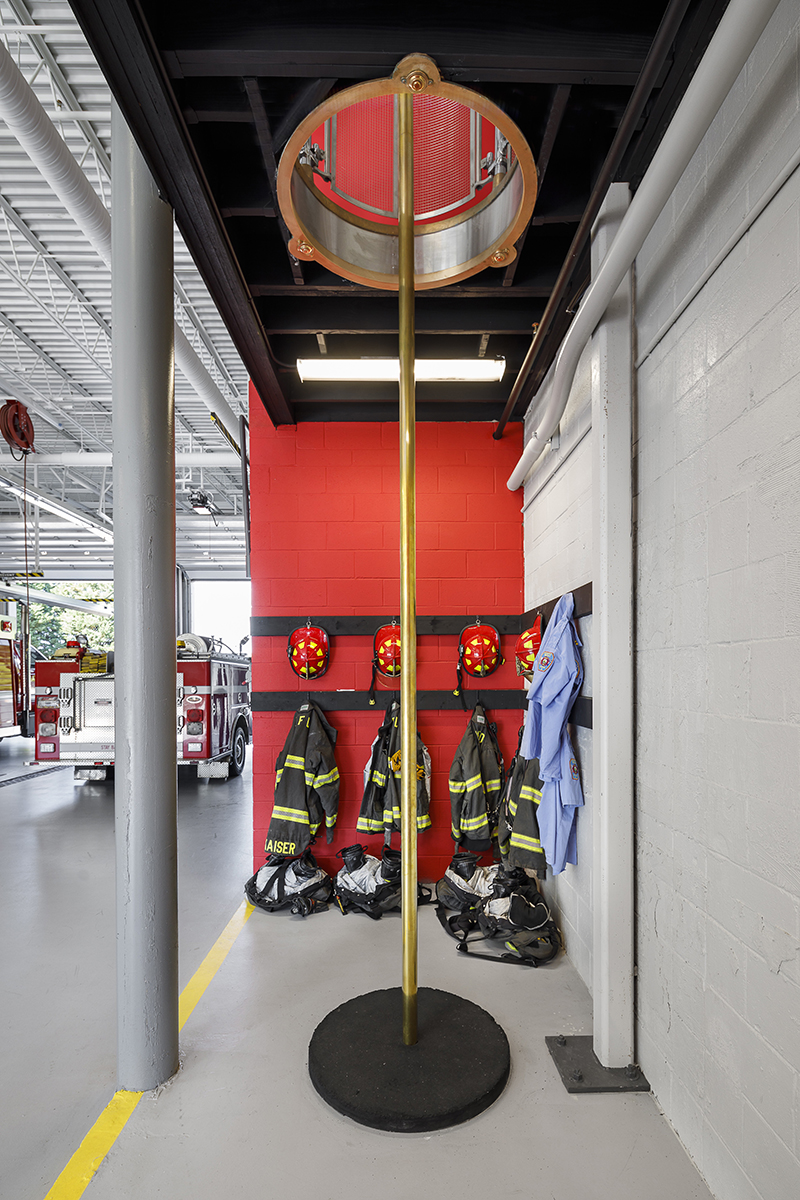
5 The station features a new operational fire pole from the second level into the apparatus bays.
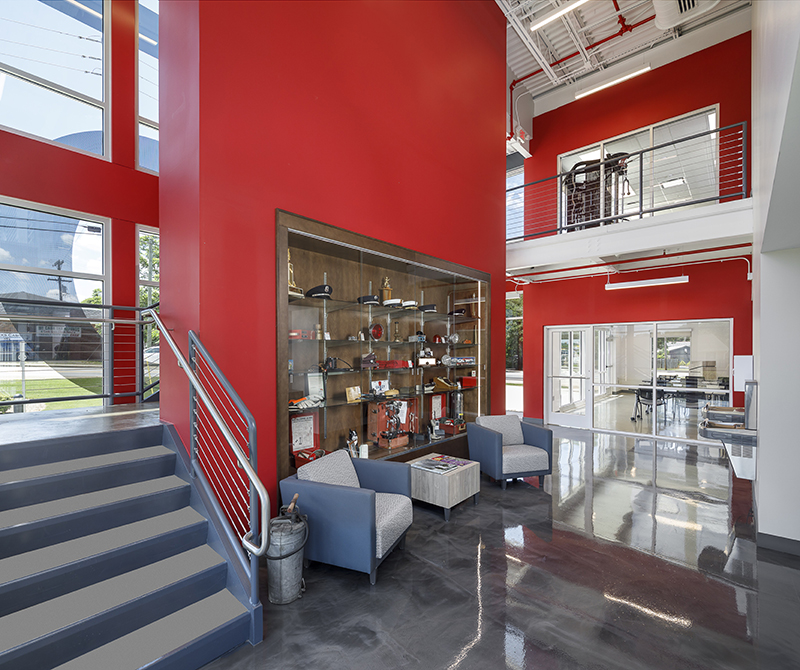
6 The department displays fire equipment from past years in a case in the station’s public lobby.
Connected to the apparatus bays on the other side are the administrative and office spaces, he points out, including offices for the chief, captain, fire marshal, administrative lieutenant, assistant battalion chief, lieutenant, training officer, and administrative assistant. Other spaces on the first floor include a duty room, conference room, restroom, storage area, training room, janitorial area, and catering kitchen.
Pry says the station’s second floor consists of living and sleeping spaces for firefighters. “We have eight bunk rooms, seven of which have a single bed, desk, and triple lockers,” Pry notes. “The eighth room is a captain’s bunk, which is slightly larger than the others.” Four private unisex restrooms, each with a toilet, sink, and shower, serve the firefighters in the eight bunk rooms. Along the far wall of the second floor are the kitchen, dining, and dayroom areas, Pry says, all flooded with natural daylight. An exercise room occupies the front of the second floor, also exposed to natural light.
Owen says the department wanted DP3 Architects to bring some of the history of the department into the 16,725-square-foot station, so there’s a display case in the public lobby where fire equipment from previous years is showcased. “We wanted to show visitors a bit of the history of the fire department, so we have old nozzles, charcoal filter breathing apparatus, and an old Federal Q-style siren with no siren brake displayed in a case,” he says. “When you go up the stairs to the second floor, we have insets in the wall that hold old turnout gear from the decades when it was used—the 1960s and 1970s, then 1980s, and finally the 1990s.”
Pry notes that DP3 gave the station “a clean, modern industrial look, with a maintenance-free aluminum skin exterior over a steel frame with metal infill studs and metal rib panels attached.
Pry adds that the brotherhood of the station exemplifies itself in the dining room table, which was built by firefighters from wood salvaged from a building that previously stood at the site. “Inset in the table are medallions with the names of retired firefighters,” he says, “acknowledging that, ‘They will always have a seat at the table.’ The station also features a new operational fire pole from the second level into the apparatus bays, incorporating a well-known symbolic element of fire stations.”
ALAN M. PETRILLO is a Tucson, Arizona-based journalist, the author of three novels and five nonfiction books, and a member of the Fire Apparatus & Emergency Equipment Editorial Advisory Board. He served 22 years with the Verdoy (NY) Fire Department, including in the position of chief.

